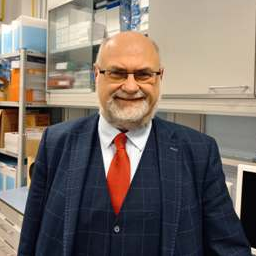Esther Lederberg’s 100th Anniversary: Microbial Genetics and Bacteriophages
A special issue of Microorganisms (ISSN 2076-2607).
Deadline for manuscript submissions: closed (30 December 2023) | Viewed by 2159
Special Issue Editor
Interests: gene expression regulation; DNA replication; bacteriophages; plasmids; human genetic diseases; neurodegeneration
Special Issues, Collections and Topics in MDPI journals
Special Issue Information
Dear Colleagues,
Esther Miriam Zimmer Lederberg (1922–2006) was an American microbiologist and a major pioneer in the field of bacterial genetics and the study of bacteriophages.
She completed her master’s degree at Stanford University and then moved to the University of Wisconsin-Madison where she completed her doctorate (1950). As part of her outstanding research career, she discovered the lambda phage, a bacterial virus which is a fundamental tool for today’s studies on gene regulation and genetic recombination. She also invented the replica plating technique, which is widely used to isolate and analyze bacterial mutants and to monitor antibiotic resistance.
Her remarkable findings laid the groundwork for demonstrating how phages can transfer genes between bacteria, and were crucial to advancing the understanding of key aspects such as how genes are regulated and the process of DNA recombination.
To commemorate the 100th anniversary of the birth of Dr. Lederberg and to recognize her outstanding career, in this Special Issue we provide a platform for experts in the fields of bacterial genetics and the study of bacteriophages to share their most recent advances in these areas. We welcome research articles, comprehensive reviews, communications, and perspectives.
Prof. Dr. Grzegorz Wegrzyn
Guest Editor
Manuscript Submission Information
Manuscripts should be submitted online at www.mdpi.com by registering and logging in to this website. Once you are registered, click here to go to the submission form. Manuscripts can be submitted until the deadline. All submissions that pass pre-check are peer-reviewed. Accepted papers will be published continuously in the journal (as soon as accepted) and will be listed together on the special issue website. Research articles, review articles as well as short communications are invited. For planned papers, a title and short abstract (about 100 words) can be sent to the Editorial Office for announcement on this website.
Submitted manuscripts should not have been published previously, nor be under consideration for publication elsewhere (except conference proceedings papers). All manuscripts are thoroughly refereed through a single-blind peer-review process. A guide for authors and other relevant information for submission of manuscripts is available on the Instructions for Authors page. Microorganisms is an international peer-reviewed open access monthly journal published by MDPI.
Please visit the Instructions for Authors page before submitting a manuscript. The Article Processing Charge (APC) for publication in this open access journal is 2700 CHF (Swiss Francs). Submitted papers should be well formatted and use good English. Authors may use MDPI's English editing service prior to publication or during author revisions.
Keywords
- microbial molecular biology
- microbial physiology
- bacteriophages
- plasmids
- gene expression regulation
- genetic recombination in bacteria
- DNA replication control in bacterial cells
- mutagenesis and DNA repair in bacteria






